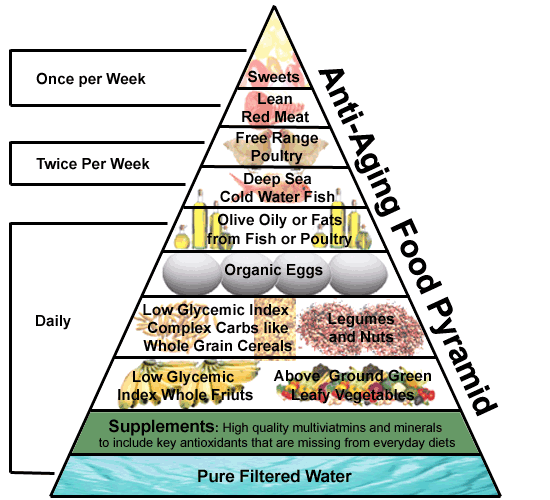
The Anti-Aging Food Pyramid
February 26, 2014 / 4:10 pm


February 26, 2014 / 4:10 pm


February 16, 2014 / 3:40 pm

Q: Do eyelash growth serums work? What is the difference between prescription and over the counter products?
A: These serums contain ingredients which extend the anagen or growth period of the natural cycle of eye lash growth as well as conditioners to improve the look of the lashes. They have been proven to be very effective when used consistently.
Bimatoprost is the only ingredient proven effective by lab studies and currently, Allergan (the makes of Latisse) has exclusive rights to its use. It was originally used in glaucoma medication to relieve pressure in the eyes and a side effect was longer, thicker eye lashes. It has been proven safe to use for everyone except those with a history of glaucoma.
Latisse claims to make the eye lashes darker over time but I have not personally seen this result nor have any of my clients. Some people do experience irritation or a darkening of the skin along the lash line.
Consistency is key, you must use the serum daily for 90 days to achieve the maximum results then a few times a week for maintenance.
The over the counter products you see on the market are “lash conditioners” or “lash enhancers” and because of Allergan’s patent, they cannot contain bimatoprost. They might make your lashes healthier but not necessarily longer. Many popular companies have been forced to reformulate their products over the past few years, make sure to check the ingredients and read the label so you know what your are purchasing!

February 4, 2014 / 8:44 pm

This is a post from guest blogger Jacquelyn Omotalade, lifestyle blogger and founder of Ruth Omosunbo.
The weather outside is frightening!
I have a tough time keeping my skin moisturized. The changing weather temperatures are brutal on my skin. I pine for the skin of a newborn baby – soft and delicate. I have found a DIY body scrub that helps me get it.
I am very wary of a lot of over the counter lotions and creams. If I can’t understand or pronounce the words on the back of the container, how do I know the products are safe for my body?
My concerns lead me to develop my own products for my skin at home and the results have been fabulous.
One of my favorite products is my brown sugar and Coffee scrub. It has worked miracles on my skin. I use it 2-3 times a week and find that it helps my skin stay soft and moisturized.
Ingredients
2 cups of coffee grinds
1.5 cups of dark muscovado sugar
2 cups of coconut oil (liquid form)
2 cups of olive oil
2 tablespoons of ginger powder
2 tablespoons of cinnamon powder
1 tablespoon of tee tree oil
½ cup of vegetable glycerin
2 12-16 oz air tight containers
I first add the coffee grinds and sugar into a clean bowl. Add the coconut oil and stir the mixture together. Next add the ginger and cinnamon powders and tea tree oil.
Mix the ingredients together. They should begin to form a paste.
Mix in the olive oil and glycerin. Make sure the paste is completely mixed together.
Coat the inside of the air tight container with coconut oil. Pour the paste into the container.
To use, take a shower as you normally do, then turn off the water and scrub your whole body with the exception of your face with the body scrub. Rub as much of the body scrub as you can off your body, then rinse your body off with luke warm water. Pat your skin dry and go about your day.
Jacquelyn Omotalade is a socially conscious lifestyle blogger, founder of Ruth Omosunbo, a batik and textile boutique founded to enrich the lives of artisans around the world and one of my favorite all around divas! She currently resides in San Francisco.
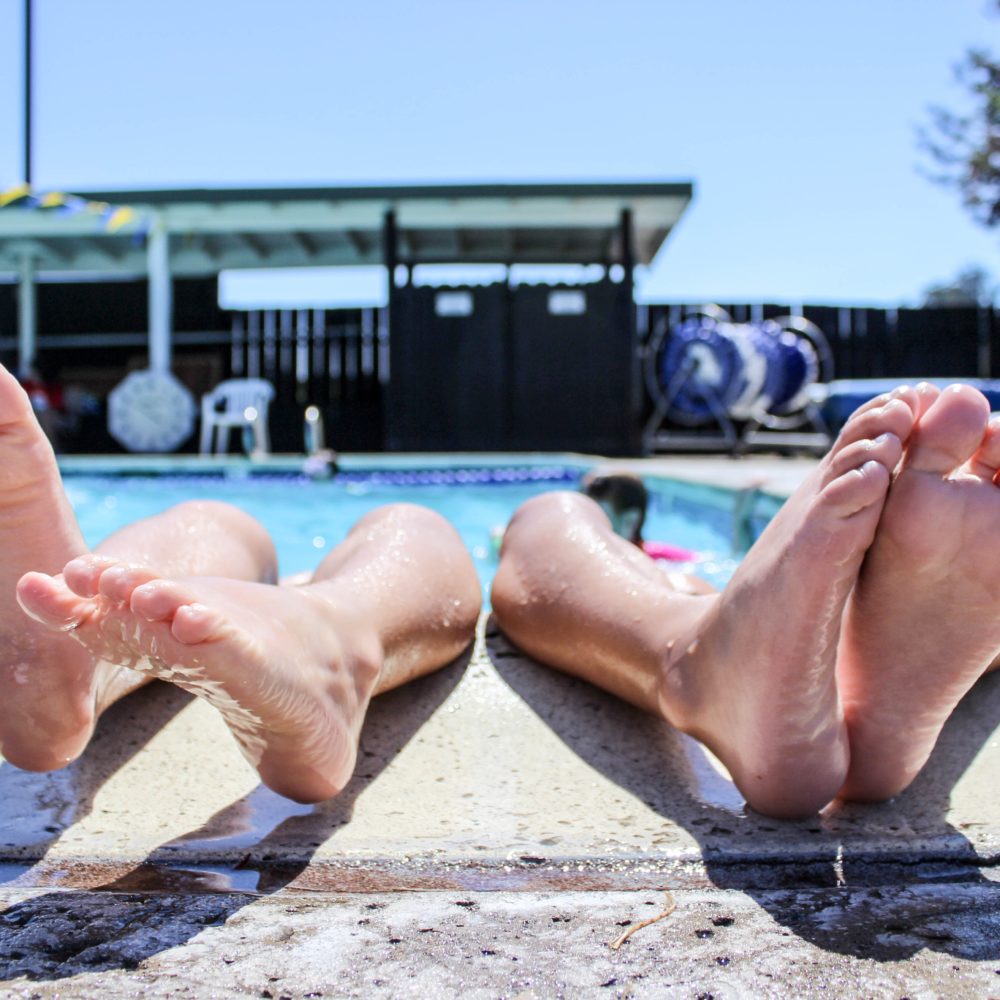
January 26, 2014 / 3:46 pm

Q: My heels are dry and rough from the winter weather, what can I do to fix this?
A: You can have smooth the feet, the key is consistent care.
1. Purchase a basic pumice stone and use it daily in the shower. The goal is to remove the dead skin cells so the moisturizer can penetrate.
2. After you shower, apply a glycolic acid cream to the area continue the exfoliation process and add moisture.
3. Before you go to bed, apply a thick layer of a rich cream like shea butter or cocoa butter all over your feet and put on socks. You don’t need the fancy socks designed to smooth your feet, just an old pair you don’t mind getting dirty.
Continue this routine daily until your feet are soft and smooth then at least once a week for maintenance.
Many nail salons offer fancy pedicure that include shaving off callouses with a blade. If your feet are heavily calloused, check with a podiatirst before having any invasive treatment. Done incorrectly, it can lead to infection and long term foot pain.
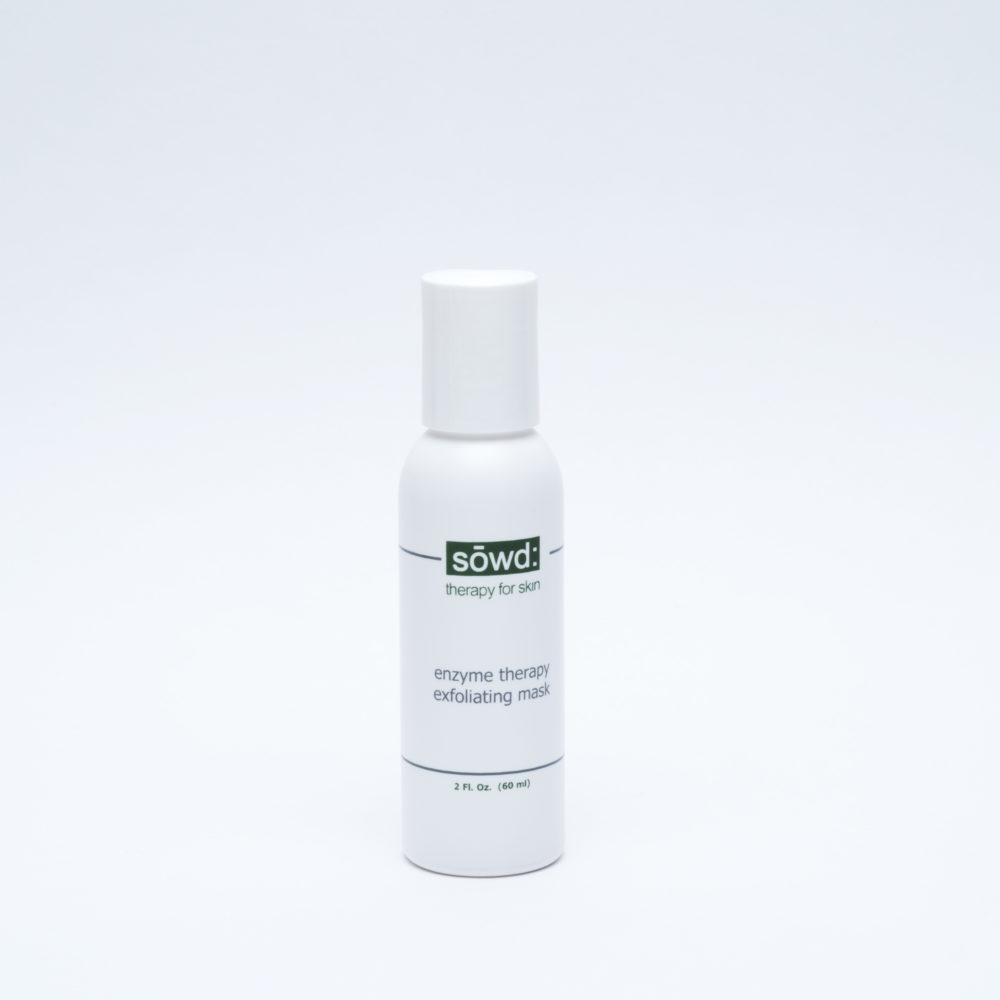
January 15, 2014 / 2:55 pm

Exfoliation is such an important part of any skin care routine and there are many options on the market. Most products fall into one of three categories: physical, chemical or enzyme.
I prefer an enzyme because they are gentle yet very effective when used correctly.
Enzyme Therapy: Exfoliating Mask employs beta-hydroxy acids as well as fruit enzymes from pumpkin and pomegranate to lift dead skin cells and release oxidized sebum from the pores. This gel mask is designed to be used 1-3 times per week, depending on your skin.
Apply a thin layer to clean, damp skin and spread evenly over the face. Allow the product to sit for 3-5 minutes: this is when the magic happens! Rinse clean with cool water and apply a serum or moisturizer.
Enzyme masks can be a little more time consuming than a scrub or an acid but the results are worth it.
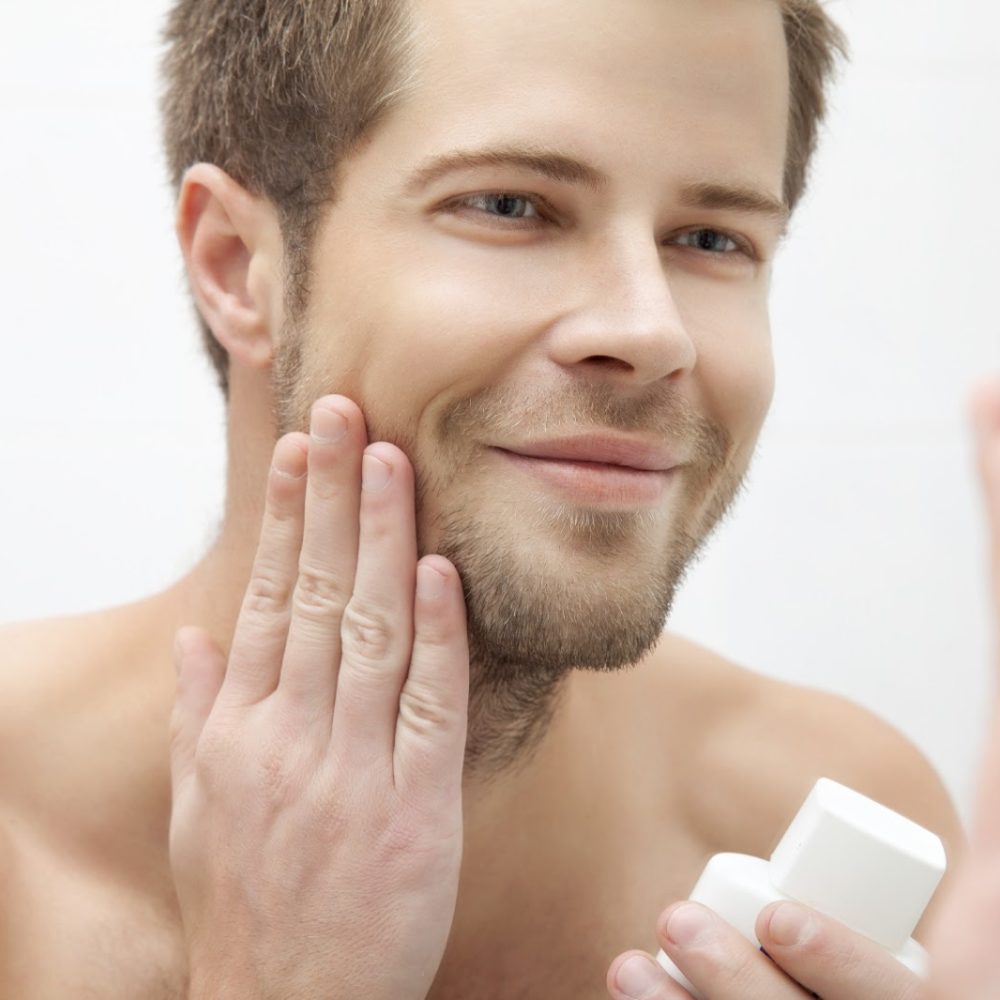
January 5, 2014 / 4:17 pm

Recently, I realized half of my tinted moisturizer sales were to my male clients.
Men want to put their best face forward even if it means having some help. More companies are actually creating makeup lines for men but venturing into this realm can be daunting.
As with anything new, start simple. The new breed of tinted moisturizers are great (often called BB cream or CC cream), they provide light coverage to even skin tone and decrease shine while providing all the benefits of an SPF and moisturizer. My personal favorite is Suntegrity.
If you have a pimple or any area where you need more coverage, use a concealer. This is a product with more pigment designed to camouflage imperfections. It is not meant to be used in large areas.
A light application of tinted face powder will provide some coverage and reduce shine. Be careful not to get heavy handed since excess powder can cake in the creases of your face during the day.
Consult a professional if you have a difficult time finding a color that matches your skin tone.
When applying any tinted product, avoid the beard area if you have stubble. The product will get caught in the hairs.
Avoid wearing any tinted product when you are working out, it will run and discolor your shirt collar and towels.
Wash your face with a product designed to dissolve makeup in the evening.
Makeup can be fun, embrace it!

November 13, 2013 / 3:38 pm

Q: “I go crazy collecting skin care product samples in department stores, I LOVE samples! Is it bad for my skin to be using so many different products?
A: Yes! Trying new products all the time can confuse your skin and lead to irritation. The amount of product in most sample packs lasts for 2-4 days so you may be using multiple products for each step inside of one week.
Another major downside: when you skin is looking fab, you won’t know which product made the difference!
I recommend testing one sample product at a time while keeping the rest of your routine consistent. Unfortunately, the amount of product in one sample pack won’t really tell you if it’s going to produce major results in the long run but it will tell you if you like the texture and scent.
It’s tempting to load your suitcase with product samples for travel but this isn’t the best idea either. Dry airplane air and a new climate alters your skin. The face wash that leaves your skin glowing in the humidity of Hawaii might leave you dry and flaky during the windy winter in San Francisco! Invest in refillable bottles and keep your vacation routine consistent.
Got a skin care question? Email hannahsowd@hannahsowd.com
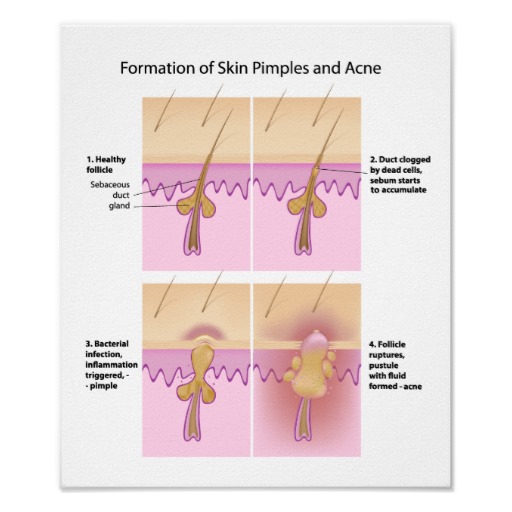
November 3, 2013 / 2:55 pm

Are you still not convinced a skin care routine that includes exfoliation will help prevent breakouts? Getting rid of dead skin cells and debris will help stop the cycle before it begins.

October 23, 2013 / 3:59 pm

Take a stroll down the skin care aisle at any major retailer and you will get a sense that exfoliating your skin is important.
Why has exfoliation become such an important part of our skin care routine? And what is the best method for your skin type?
The skin is comprised of four layers, the top layer includes dead and dying skin cells. In young, healthy skin, these dead cells flake off in a normal cycle of about 28 days.
As we age, or our skin becomes damaged by exposure to the elements, this normal cycle begins to slow. If these dead skin cells are allowed to remain on the face for a longer period of time, the skin begins to appear rough and dull. This excess skin can also clog pores and cause blackheads.
There are many exfoliation products on the market, most fall into one of these categories:
Physical: Anything that uses particles to removes dead skin cells. Scrubs, face brushes and microdermabrasion treatments are all physical exfoliators.
Enzyme: These products use an enzyme, usually derived from fruit, to dissolve the bonds that trap dead skin cells and slow the natural skin cell turn over. An enzyme exfoliator, usually in the form of a gel or cream, is left on the skin for a short period of time to allow it to penetrate.
Chemical: Anything that uses an acid to remove dead skin cells is a chemical exfoliator. Glycolic and salicylic are two of the most popular acids used in this manner. Professional chemical peels also fall into this category.
My favorite method of exfoliating at home on a regular basis (1-2 times per week) is an enzyme mask. Enzymes are more effective and predictable than scrubs and carry less of a chance of reaction than chemicals.
For best results, professional exfoliating treatments like chemical peels and microdermabrasion should be incorporated into your routine.
Consult a professional to determine the best course of treatment for your skin type. Many of my clients with combination skin and fear of aging have a session of microdermabrasion every 4-6 weeks and a light chemical peel 3-4 times a year.
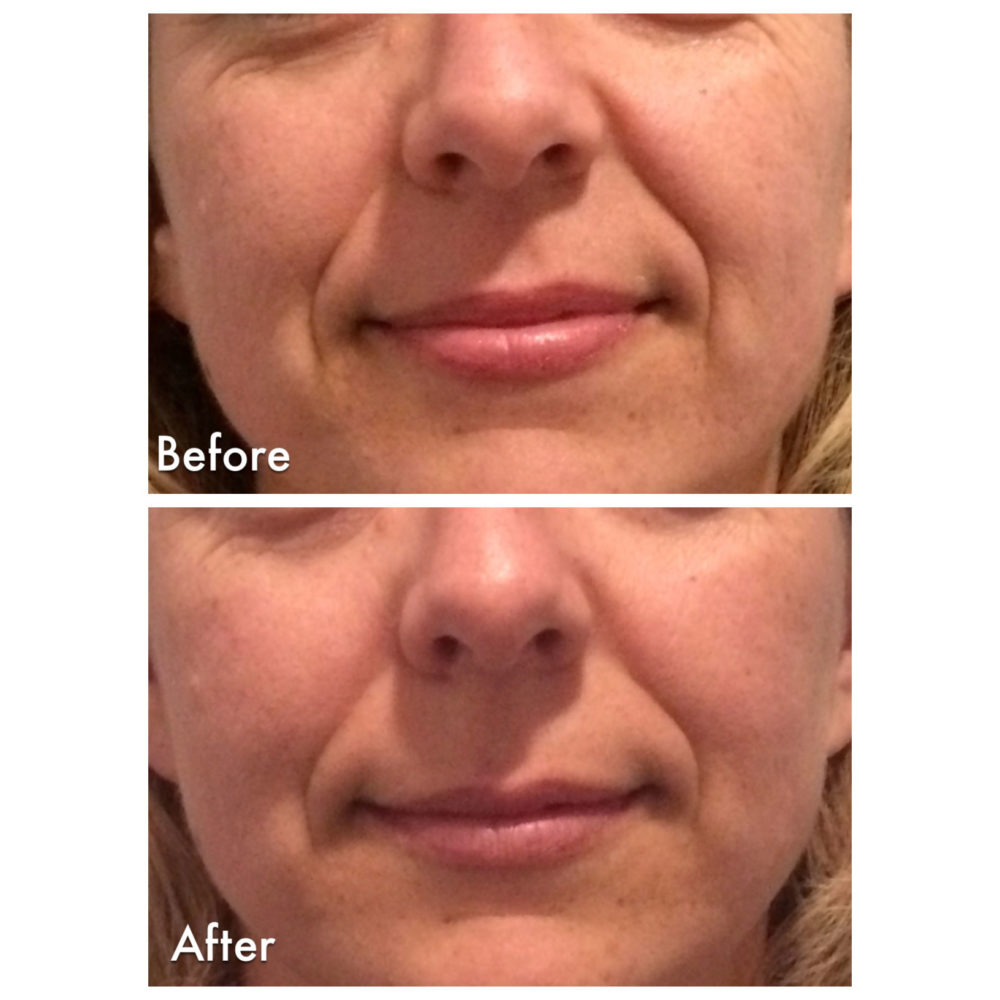
October 2, 2013 / 3:51 pm

Every so often I look at my treatment menu and think “What more can I offer?”, then I recruit a friend to be my guinea pig and, most times, a new treatment is born!
My most recent “discovery” is the amazing combination of Dermaglow Microdermabrasion and Deep Skin Ionization. It’s the total package: resurfacing, anti-acne, anti-aging, firming and clarifying.
This combination of treatments is aggressive, I wouldn’t recommend it for sensitive skin types or immediately before a big event. It’s perfect for more resilient skin types who want to kick start a new skin care routine or need a pick me up after a busy summer. The Before and After photo above shows the results of a series of 6 treatments, spaced 2 weeks apart and paired with a home care routine. If you want to determine whether this treatment is good for you, drop me an email hannahsowd@hannahsowd.com and we can discuss your options. If you ready to book, go here!
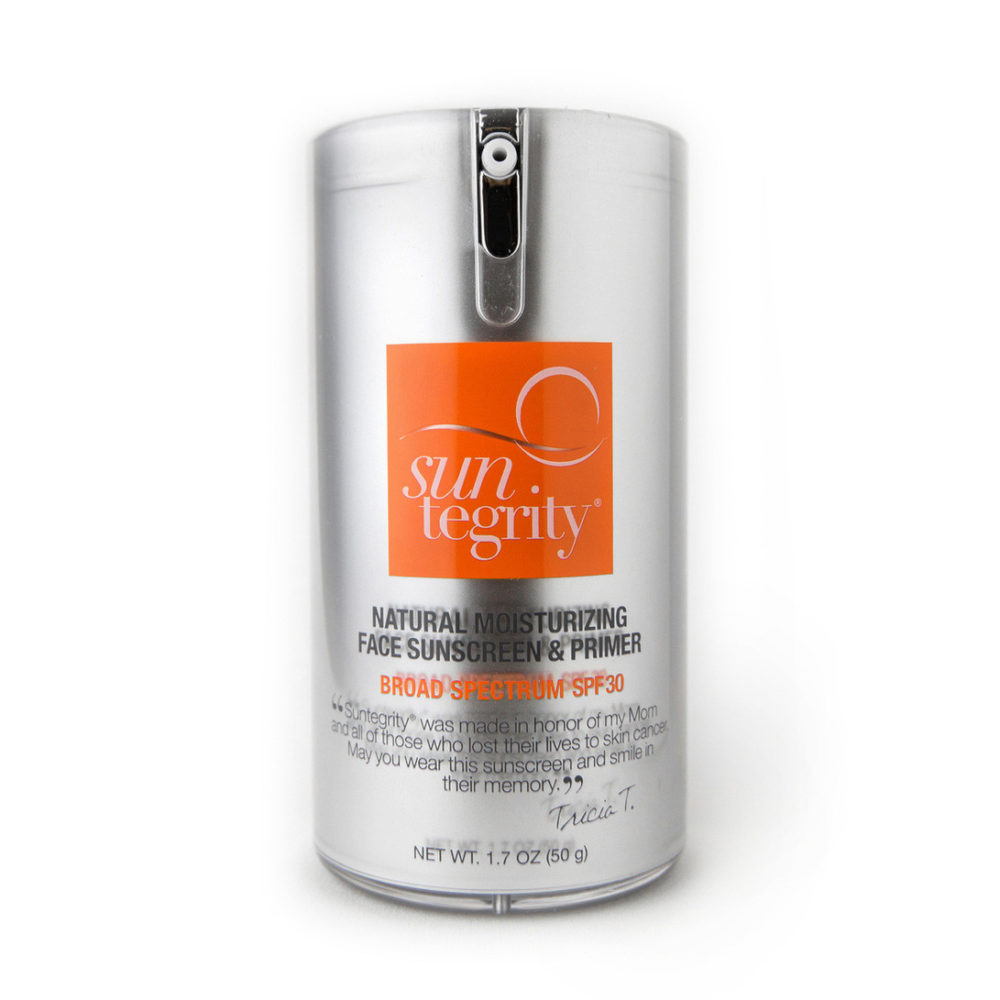
September 22, 2013 / 4:35 pm

When IS Clinical discontinued my all time favorite sunscreen product I was pretty upset. Dealing with melasma issues, sunscreen is a huge part of my daily skin care routine and I’m very picky about which product I use.
After searching high and low, I discovered Suntegrity products and now I’m hooked. In fact, my melasma is doing better than ever.
Suntegrity uses only the physical sunscreen ingredient, Zinc Oxide, to provide protection which does more to prevent the recurrence of melasma than a chemical sunscreen. The Natural Moisturizing Face Sunscreen and Primer employees a full 20% Zinc Oxide to protect your skin, without using any parabens, sulfates, PABA, titanium dioxide, nano-particles or chemical UV absorbers. And of course it’s vegan and cruelty free (PETA & Leaping Bunny Certified).
The consistency is a bit thicker than a product that contains chemical sunscreen but it absorbs quickly without leaving any white residue (even my darkest clients are happy with it!) and the light citrus scent is a nice bonus.
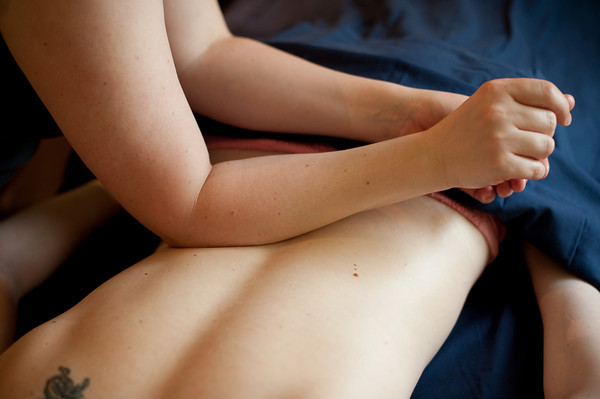
September 1, 2013 / 3:38 pm

Getting your first professional massage can be daunting!
Tell your massage therapist if you’ve never had a professional massage so they can answer all your questions before the session begins.
Massage is generally booked by the length of the session. A one hour (or longer) session will allow time to cover the entire body whereas a shorter session (30 or 45 minutes) will only allow time to focus on a few specific areas.
Most spas will ask if you prefer a male or female massage therapist. This is the time to speak up, you will not hurt anyone’s feelings with your preference!
You make take off as much or as little clothing as you like, many clients keep their underwear on during the session. You will be fully covered with a sheet during the entire session and female clients will be offered a breast drape if work is done on the stomach area.
This is YOUR treatment! If something feels uncomfortable, speak up. Massage therapists are well trained to read body cues but they cannot read your mind! Feedback during the session is welcome and encouraged.
Common requests include more or less pressure, avoiding specific areas of the body like the face or the stomach, a cooler or warmer table or treatment room and louder or softer music in the treatment room.
You may talk to your therapist during the session but don’t feel obliged to keep up a conversation. This is your time and do what makes you comfortable.
The most important thing is to relax and enjoy your treatment!

August 21, 2013 / 2:01 pm

I seem to have an abundance of first timers showing up at my studio this year!
Most everyone is curious about what happens during a facial, here are some pointers to help you get the most of your experience.
For your first treatment, book a basic facial. Glycolic peels and microdermabrasion are amazing but it’s best to get a professional opinion about what is best for your skin before scheduling a more aggressive treatment. Most estheticians (myself included) will offer a complimentary 15 minute consultation either over the phone or in person if you have questions.
Before your appointment, take note of the products you are currently using on your skin. If they contain active ingredients like alpha hydroxy acids, salicylic acid, glycolic acid, benzoyl peroxide or retinol make sure you let you esthetician know. If you are unsure, don’t hesitate to bring your products with you (or take a photo of the label).
Also, take a moment to think about what bothers you about your complexion. Do you suffer from acne breakouts? How frequently? Do you have dark spots or wrinkles you would like to minimize?
If you have an idea of what you would like to work on, your esthetician will be able to give you a tailored treatment and customize the appropriate treatment plan for you.
Be up front and honest about your time and budget constraints.
A basic, one hour facial will most likely include the following:
Cleansing: This step includes removal of makeup and cleansing the skin. Show up for your appointment wearing minimal makeup so time isn’t wasted removing it.
Exfoliation: Exfoliation can be done with a chemical like glycolic acid, an enzyme or a scrub and the goal is to prepare your skin for extractions.
Steam: Often steam is applied while the exfoliating mask in on the skin. Steam helps the pores to relax and hydrates the skin to make extractions easier.
Extractions: Most full length facials include extractions which is the removal of blackheads and whiteheads. This step is often skipped in shorter, “express” facials so if it’s important to you, don’t hesitate to ask.
Massage: Dry skin will benefit from facial massage but oilier skin types may react poorly. Your esthetician will determine what is right for your skin type.
Mask: A facial mask will help soothe the skin after extractions or hydrate dry skin. Often, the esthetician will massage the decollete and the hands while the mask is on. They also may leave the room for a few moments to get fresh water or any other supplies they may need.
The final step will be an application of lotion containing an SPF. Don’t hesitate to ask any questions you have either during or after the treatment. Estheticians are well trained to assess your skin but feedback from you is important.
Make sure you get the most out of your treatment!
August 11, 2013 / 3:07 pm
Q: Should I replace my products all at once? Or integrate them slowly? Also, do I need to use the same brand for my entire skincare routine?
A: It depends on your skin and your skin care goals.
When our skin changes radically due to environment or hormones, more than one new product may be necessary and it is okay to incorporate more than one product into your new routine.
If you are adding a new product for increased anti-aging benefit, changing only one product at a time can give you a better idea of the results you are getting (or if your skin is reacting badly).
You do not need to use the same brand of skin care products for your entire routine and the only person that will tell you otherwise is an eager salesperson!

August 9, 2013 / 6:18 pm

Hannah Sowd combines her varied work history and extensive education to provide effective skin care treatments and therapeutic body work. She embraces a holistic approach centered around lifestyle and preventative maintenance.
As a teenager Hannah suffered from hereditary acne, she received facials from an esthetician which piqued her interest in skin care. Her skin problems eventually led her to a dermatologist where she noticed a profound disconnect between the two professions.
The dermatologist didn’t approve of the esthetician’s treatments and vice versa but Hannah thought “I’m getting results from the combination of treatments, what would it be like if they were able to work together?”. Fast forward twenty years and, thankfully, that is becoming a reality
In 1998, Hannah learned a new treatment from Europe that was gaining popularity in the states; microdermabrasion. This marked a major turning point in the skin care industry and Hannah’s career. Microdermabrasion was one of the first effective, affordable treatment options for acne scars and wrinkles and helped bridge the gap between the spa and the
doctors office. Years later, it remains one of the most popular treatments in the industry as well as on the menu at Hannah Sowd Skin Care.
For eight years, Hannah ran the skin care department at the Spa at The Four Seasons Hotel in Beverly Hills. The fast paced environment centered around “awards show season” and catered to the Hollywood elite, providing cutting edge, effective yet relaxing treatments.
When Hannah decided to move home to Northern California, she took her career in a new direction and accepted a position practicing skin care in a plastic surgery office. The world of plastic surgery wasn’t the best fit so she moved on to build a part-time practice in a dermatology office in downtown San Francisco.
Always curious about owning her own business, Hannah started seeing clients at a shared studio space two days a week. After four years of working 6-7 days a week, her business was booming so she made the transition to a full time private practice in 2012.
Today, Hannah Sowd Skin Care operates 7 days a week and sells Hannah’s line of skin care products, sowd:therapy for skin. It is the embodiment of Hannah’s diverse experience and education, providing effective, relaxing, customized treatments and high quality skin care products.

July 31, 2013 / 2:02 pm

Q: I have bumps on my forehead and no matter how much I exfoliate, they won’t go away. Help!
A: The forehead is part of the T-zone, a region of the face that produces more oil. This excess oil can get trapped under a layer of dry skin and produce bumps. These bumps may never form into pimples or blackheads but can be just as annoying!
Cleanse you face twice a day, in the morning and in the evening. Use a foaming cleanser with salicylic acid followed by a toner with glycolic acid.
Twice a week use a clay mask on the affected area to help to absorb the excess oil.
Have a professional cleansing facial that includes extractions every 4-6 weeks.
This routine will keep the skin exfoliated and diminish the appearance of the bumps.
Oily skin is a chronic condition that usually gets better with age but managing it requires consistency and patience.
Have a question? Email me at hannahsowd@hannahsowd.com

July 21, 2013 / 5:07 pm

Q: What can a person on a budget do for better skin??
A: More expensive products generally contain a higher level of effective ingredients. In some cases, a potent $60 night cream will last you 3-4 months. A more diluted $30 version might last 6-8 weeks so the overall investment is similar. If you find a product that is out of your price range but you really love what it does for your skin, consider using it every other night (or day). While this isn’t ideal, you will still get most of the benefits of the active ingredients. On the opposite days, substitute with a less expensive, neutral moisturizer like Cereve.
Here are a few of my favorite products that can be found at the drugstore and paired with more active products for optimal results:
Cereve Cleanser: both the Hydrating and Foaming Cleanser are great and inexpensive. For a long time, Cetaphil was considered the best drugstore cleanser but I think Cereve makes a better product. Their formulas protect and enhance the skin barrier with ceramides. Cereve PM, provides a nice amount of hydration without clogging the pores.
Aveeno makes a quality line of light SPF lotions for day use. The Ultra-Calming Daily Moisturizer with SPF 30 is a favorite among my male clients.
Vitamin C is my favorite antioxidant ingredient and most people benefit from using it on their skin. Unfortunately, I have yet to find a good,
low cost alternative in this category.
Vitamin C requires advanced technology to stay stable in a lotion or serum, if the molecule isn’t stabilized, the vitamin C oxidizes when it is exposed to air. Vitamin C serum is one place where I recommend you splurge!
If you are in your 20’s make sure you are using an eye cream at least once a day, Neutrogena makes some nice ones. If you need a product that will correct some of the signs of aging, look for an eye cream with peptides that works on a deeper level. If puffiness is your issue, I’ve never found anything better than Yon-Ka Phyto Contour.
Find a routine that fits your time and budget and stick with it!! It’s better to use products you can afford on a daily basis than slack off when you run out of the fancy stuff and can’t afford to replace it.
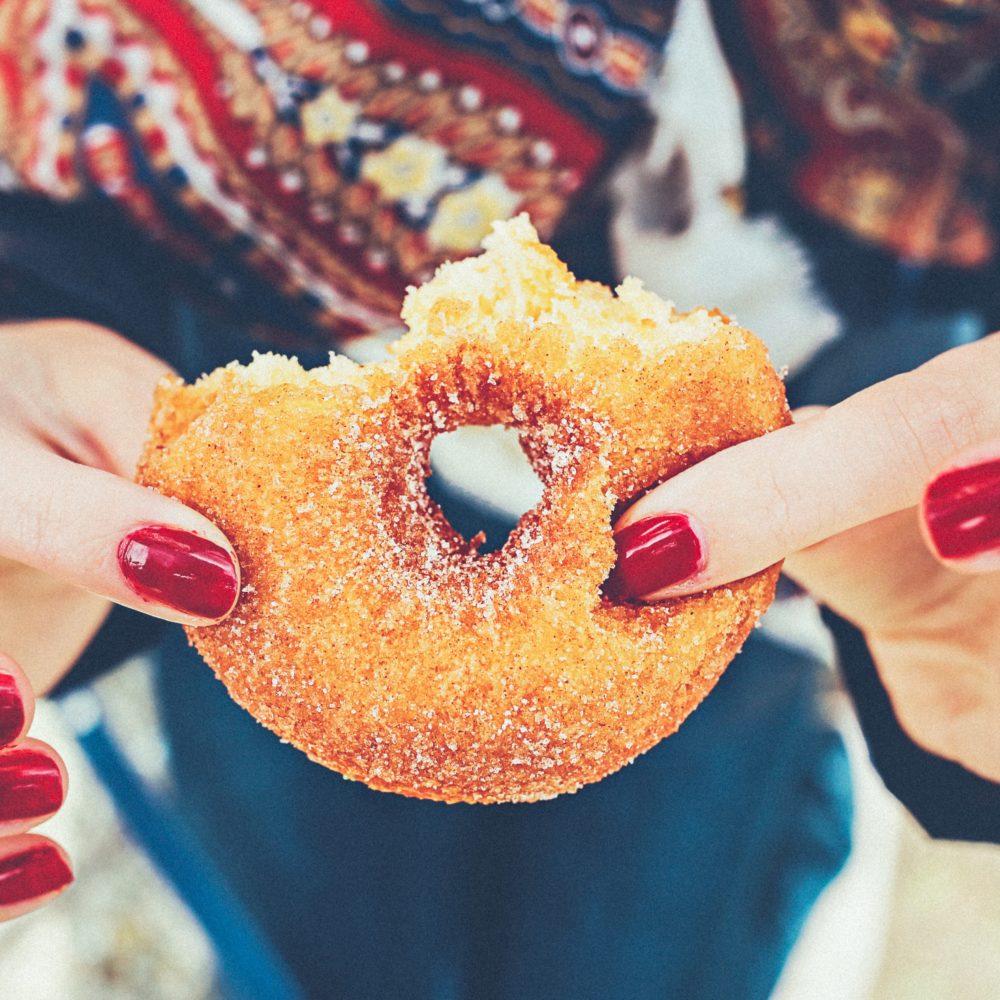
July 10, 2013 / 5:06 pm

Growing up, many of us were told not to eat greasy foods like French fries and pizza because they cause acne. Is there any truth to this theory?
Unless you have a specific allergy, a reasonable quantity of any food is not going to bring on a reaction in your skin.
That being said, a binge of junk food and alcohol that lasts a few days (or a long weekend!) can affect your skin, but when you resume your normal habits, your skin will regain balance.
Like all your organs, your skin thrives from a healthy diet. Good fats from avocado and nuts, antioxidants from berries and citrus, proteins from dark leafy greens, legumes and lean meats all support the health of your skin.
Adequate water intake, limited caffeine and sugar are an integral part as well. Recent studies show the negative affects of simple sugars on your skin, mostly in the way of free radical damage and inflammation. Limit your intake of processed foods and sugars for optimal health of your body and your skin!
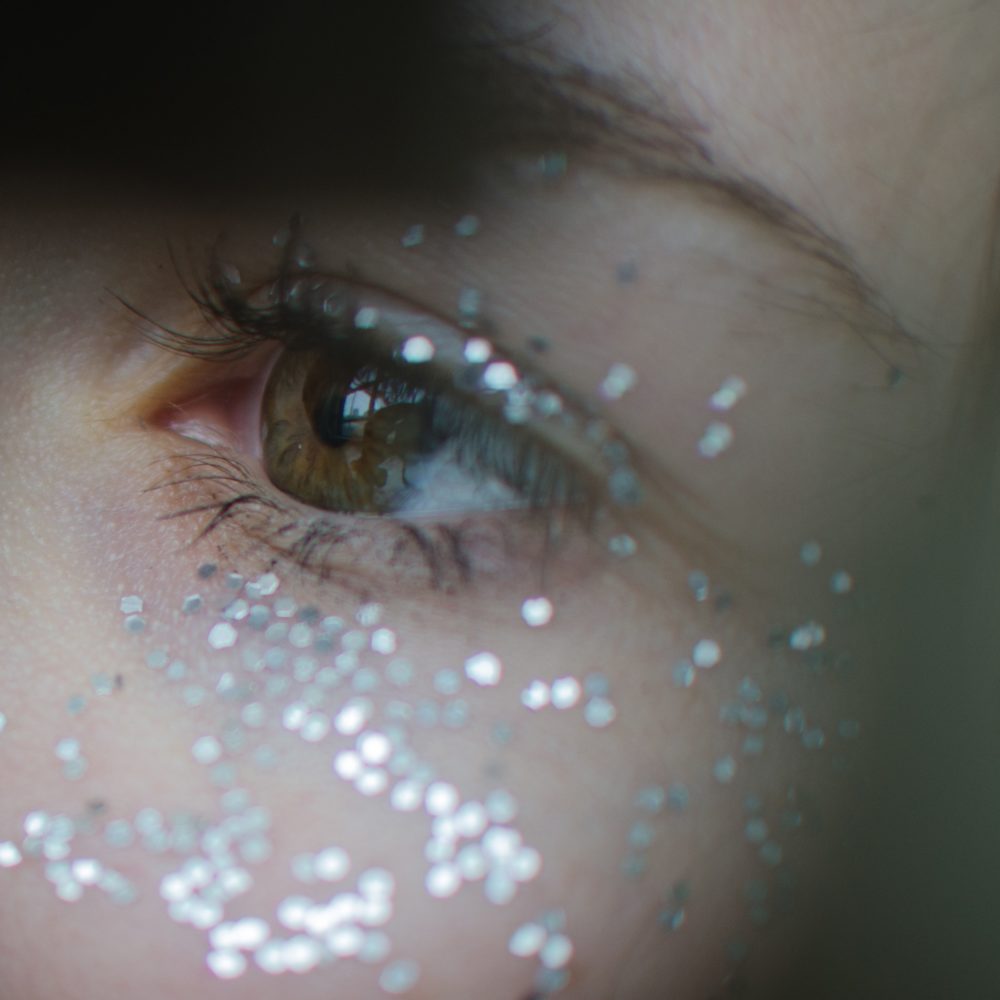
June 30, 2013 / 5:06 pm

The past ten years have seen an increase in luxury items being added to skin care and spa treatments with the promise of a better complexion. Caviar cream, 24 carat gold body wraps and most recently, black diamond skin serum.
Many of these ingredients provide a temporary benefit. I’ve worked with a line of caviar products that do a wonderful job of plumping the skin before a major event, great for a “red carpet facial”. Likewise, diamond particles fill in fine lines and wrinkles as well as reflect light which gives the skin a youthful glow when the product is applied.
However, there are no long term studies that suggest these type of ingredients penetrate the outer layers of the skin or do much for the long term health of the skin.
If you have a special occasion or feel like indulging, go for it! If you’d like more bang for your buck, use proven ingredients like antioxidants, peptides and retinols.
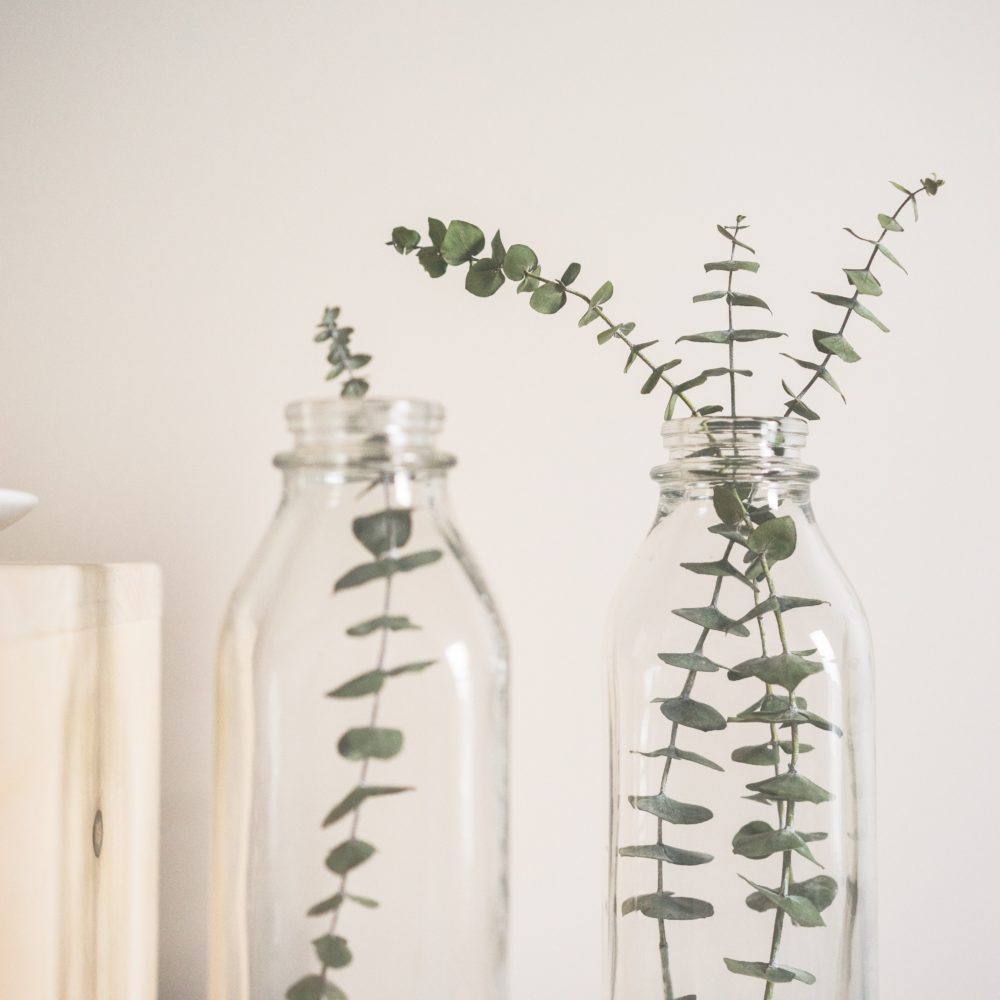
June 18, 2013 / 5:05 pm

Yes!
“If you have eczema, your skin may not produce as much fats and oils as other people’s, and will be less able to retain water. The protective barrier is therefore not as good as it should be.”
Here is a great article on the “20 Best Oils for treating Eczema“.